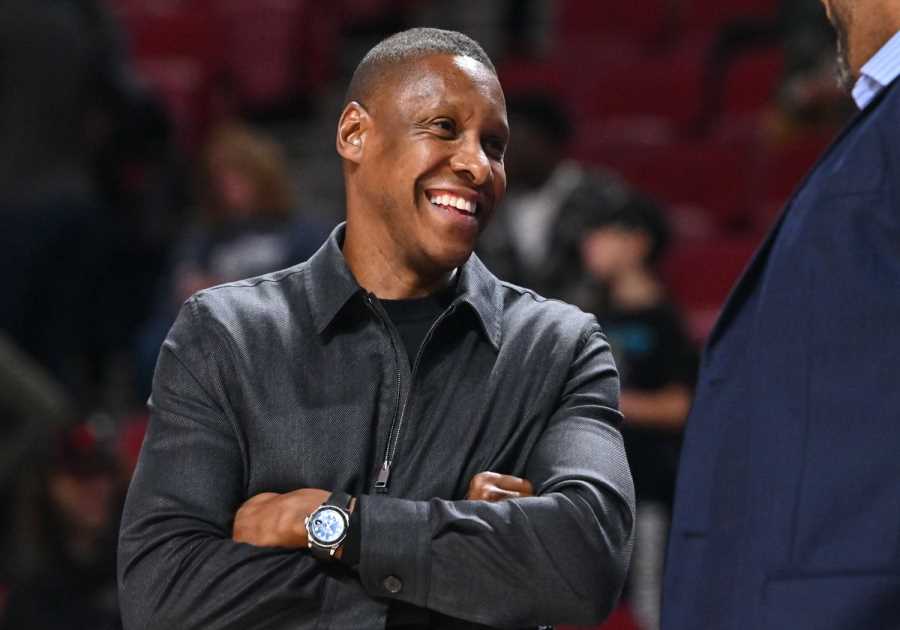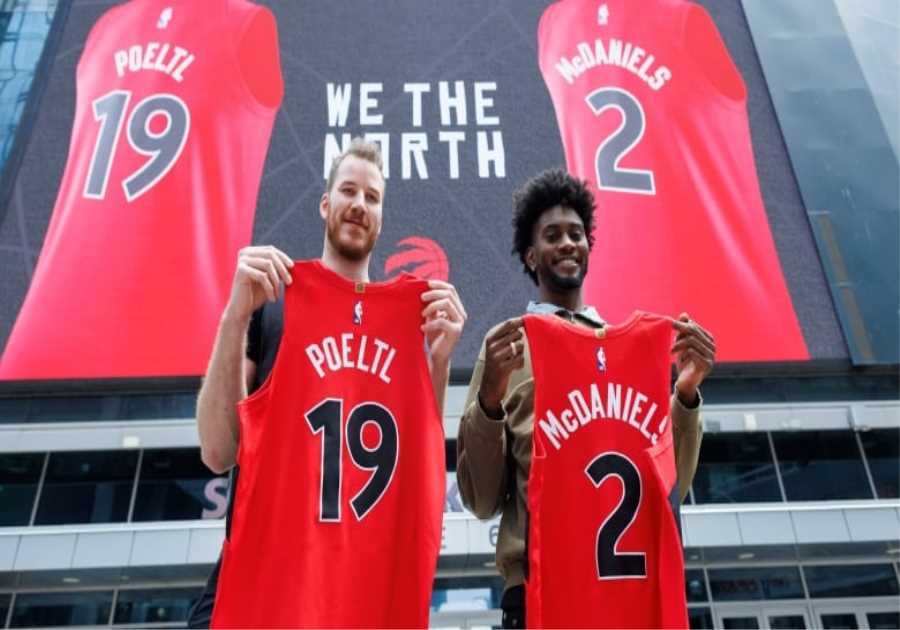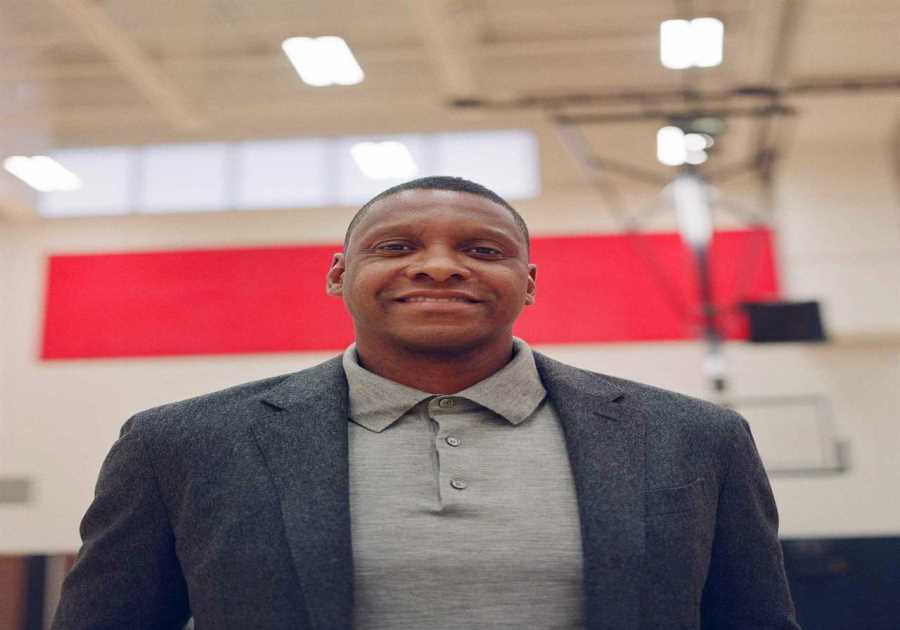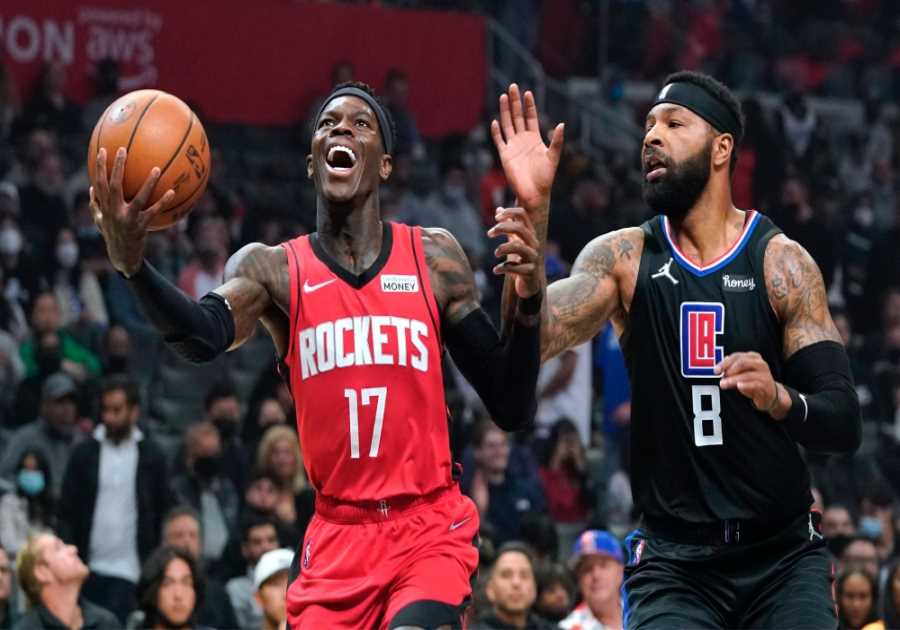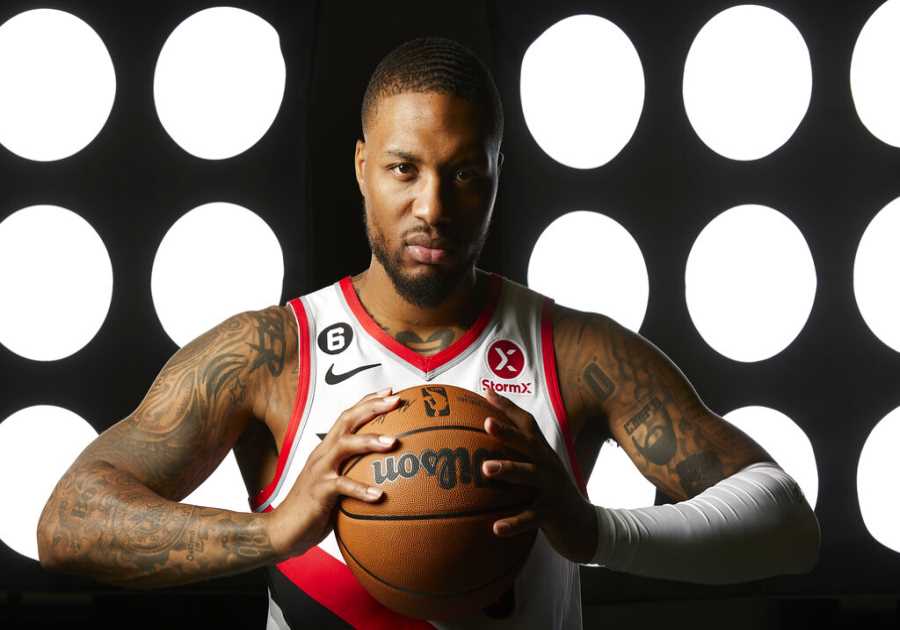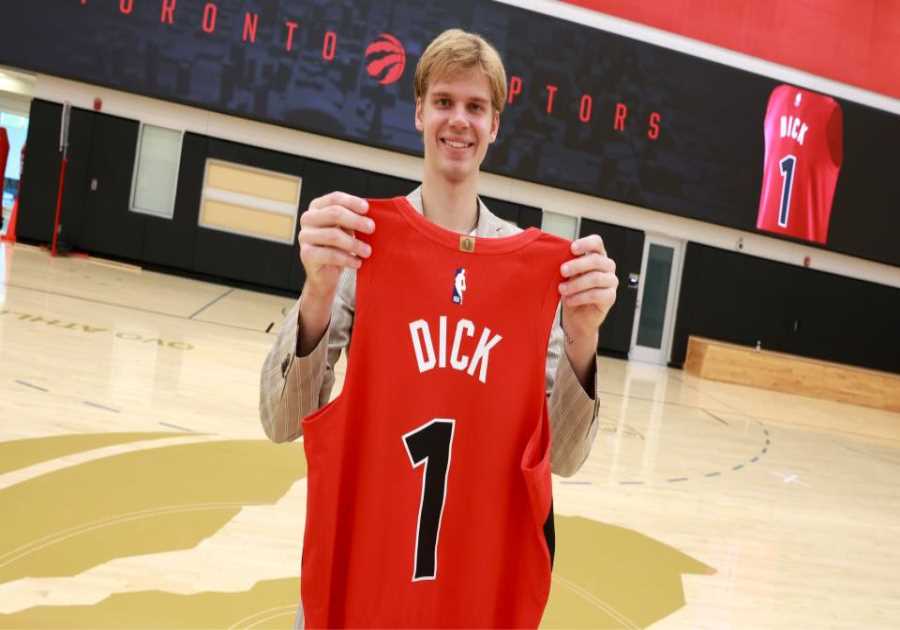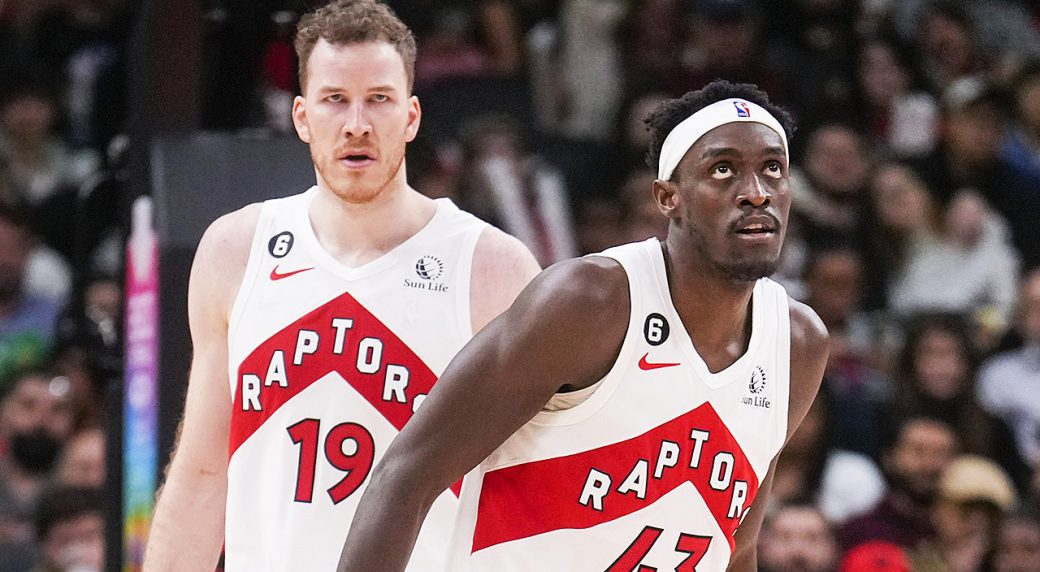
Raptors are bettern than their record and they have chance to prove that with 23 games left to the end of the season.
The Toronto Raptors will be better over their final 23 games than they were over their first 59. That much seems pretty straightforward. The acquisition of Jakob Poeltl, an All-Star break for some of the league’s most overworked players to rest up, and potential returns from injury for two key wings should all push Toronto in the winning direction.
To what extent that matters remains up for debate.
As the Raptors embark on the final quarter-plus of their 2022-23 season, here are the dozen things I’m watching with the closest eye.
1. Just how good the league’s most aggressive defence looks with a traditional rim-deterrent.
The Raptors have allowed 103.6 points per-100 possessions in the 79 minutes Jakob Poeltl has played since being acquired. That mark represents the best on the team this year, as does Poeltl’s monstrous plus-20.5 net rating. Both of those numbers will surely regress with a bit of sample size. The takeaway may not.
I won’t rehash too much of what I wrote a few weeks back about the team’s defence. In short, the philosophy makes sense, the execution has been lacking, and the whole thing could really use a traditional centre to get it back on track and maybe even take it to another level.
The early returns are promising. If Poeltl can help this group get back even to respectability at that end — let alone the top-10 mark we expected for them — this should be a different-feeling team by April.
2. Screen-setting, rim-running … are big men … important?
Poeltl’s impact has been notable on offence, too. He immediately steps in as the team’s best screen-setter — from a size, angle and timing basis. His ability to catch on the roll and either finish, stop short with a push-shot, or make the next pass when the help defender comes is another way of providing space within an offence without shooting much outside of 15 feet. It makes life easier for initiators and cutters, and he’s an elite offensive rebounder to boot.
I’m especially curious how his chemistry builds with Fred VanVleet and Scottie Barnes. VanVleet is quietly back to putting up very strong numbers, especially with respect to the usage-assist-turnover dynamic. He hasn’t often had a natural pick-and-roll partner, and the hope has to be that Poeltl’s presence can bring even more out of VanVleet’s playmaking. Barnes had stepped up significantly as a screener in recent weeks, and we’ll now get to see him operating on the handler side of those actions with Poeltl as a screener. There is some really fun three-man-game stuff the Raptors can try, too, maybe involving all three (or Pascal Siakam).
3. Pascal Siakam’s All-NBA push.
Speaking of Siakam, All-Star Weekend’s most jovial presence has a lot riding on these last few weeks. If Siakam were to make an All-NBA team again this year, he’d be eligible for a larger contract extension this summer than he would be otherwise. For Toronto’s purposes, Siakam missing All-NBA might be a reason to decline an extension and revisit a new contract in the summer of 2024 (although that would leave an awful lot of guaranteed money on the table).
Right now, it seems like a longshot that Siakam would make his third All-NBA team. He was only at the All-Star Game as an injury replacement, and while the voters aren’t the same for All-NBA (media) as they are for All-Star reserves (coaches), it’s somewhat rare for a player to not make the initial All-Star roster and then make All-NBA. Somewhat rare, not impossible.
Siakam unquestionably has the statistical profile and defensive reputation of an All-NBA player. The key factor will likely be how high the Raptors can climb in the standings, because team record has historically been a differentiating factor once you get past the very obvious, MVP-candidate selections.
4. Is the starting five the same as the best five?
If the Raptors are back to full (non-Otto Porter Jr.) health out of the break, Nick Nurse has a tough decision to make with who to start.
VanVleet, Barnes, and Siakam seem like locks. Poeltl makes more sense starting than off the bench. Precious Achiuwa has been excellent in a reserve role. Gary Trent Jr. profiles as an elite second-unit scoring leader. O.G. Anunoby has been a guaranteed starter when healthy, save for a single game in 2019-20.
That would make the decision seem straightforward, with Trent and Achiuwa moving back to the bench. Nurse has always talked about wanting to be versatile with that decision, though, and this might be the first time he can actually play the matchups or try different groups freely.
More important than who starts will be the minutes distribution and closing lineups. If Chris Boucher still gets his 20 minutes off the bench, that leaves 220 minutes to split between the top seven (and any additional depth minutes). That works out to over 31 minutes each, so nobody moving to a bench role should be too worried about their overall playing time. Heck, the Raptors might even be able to survive playing their top guys a bit less.
5. Can the closing five just be five Scotties Barnes?
In a sea of reasons to be excited about how Barnes’ season has progressed after a divisive start is that he’s been one of the league’s best performers late in close games.
In 107 minutes of late-and-close situations, Barnes is 21-of-33 on twos, 3-of-8 on threes, and 14-of-15 on free throws. He also has nine offensive rebounds and 11 assists, helping offset his nine turnovers. That’s good for an excellent 68.3-per cent true-shooting mark in the clutch on above-average usage, a rare combination at a time of the game when most players struggle to score efficiently. The Raptors have also won those 107 minutes, though they’re 13-18 in those games.
There’s no need to designate a “closer,” as you’re better off with multiple options in key situations, anyway. Having said that, Barnes getting more close-out opportunities is welcome.
6. What breaks first: The Raptors’ possession advantage or their shooting disadvantage?
As far as random stats to watch down the stretch — a favourite hobby of mine — this year ranks right up there with 2019-20 when the Raptors were chasing (and set) the record for highest volume of corner three-point attempts allowed. It’s not just the anomaly that’s of interest, but the underlying philosophy that brings it to the surface. And while the Raptors have cooled slightly on allowing corner threes (they’re only second this year), they remain an outlier.
To wit: Right now, no team has ever taken more shooting possessions than their opponent at this rate. The Raptors take a field goal attempt or get to the line 9.3 per cent more often than they allow their opponents to do the same, a mark that would top the 1972-73 Bulls as the biggest “possession battle victory” in league history.
How the Raptors have done this is fairly straightforward: They never turn the ball over, and they force an incredible amount of turnovers on defence. If that feels like an oversimplification, consider that the Raptors are tops in the league in limiting turnovers and forcing turnovers. They’re only an average defensive rebounding team, but the turnover edge (plus-263, 80 better than the next-best team) and a top-five offensive rebounding rate has meant the Raptors get to shoot a lot more than anyone else.
So why aren’t they very good? Well, getting a lot of shots is really helpful … especially if you’re not good at making them. The Raptors get outshot at the rim (67.6 per cent to 66.1 per cent), on threes (37.1 per cent to 33.6), and everywhere in between (45.5 to 42.3 on shorter mid-range shots, 44.6 to 37.3 on longer mid-range shots). What’s worse, the Raptors’ own distribution of shots is less efficient than their opponents, based on league averages from each area of the floor. Effective field-goal percentage, which is field-goal percentage accounting for the additional value of three-pointers, shows the Raptors as having one of the 40 worst eFG% gaps in league history right now, better than only the uber-tanking Spurs.
Even using true-shooting percentage, which adds the value of free throws to eFG%, the Raptors are in a tier of their own.
The Raptors are really, really good at creating extra shooting possessions and really, really bad at taking advantage of them. If either of those things changes, it will dictate which direction the Raptors are headed.
7. Spice-and-dice-and … Wies?
We probably don’t need to rehash how heavily the Raptors’ core players are used. No team is even close to taxing their top players with as many minutes (when healthy) as the Raptors. You can chicken-or-egg the depth-development trade-offs and management-coaching arguments, but however those shake out, the Raptors need to find more from their second unit moving forward.
That’s true even if everyone is back to health and the rotation picture is clearer. The so-called seven starters and Boucher all figure to have roles, leaving ninth-man (and maybe tenth?) minutes available to Thaddeus Young, Malachi Flynn, and whoever else can run with limited opportunity.
The Raptors used their open roster spot to sign Joe Wieskamp to a two-year deal after the trade deadline. Wieskamp isn’t better overall than some of the names ahead of him in the discussion, but he does bring high-end shooting ability that nobody else on the roster can replicate. Even if it’s a Jodie Meeks/Matt Thomas-type role, let’s see if Lil Wiesy can claim Best Raptor Alive.
8. Will Raptors 905 extend The Streak?
The Raptors’ G League affiliate has not missed the playoffs since their inaugural 2015-16 season, good for the longest playoff streak in the G. The 905 currently sit 9-8, narrowly holding on to the sixth and final Eastern Conference playoff spot.
Historically, the 905 have a penchant for peaking at the right time. Even the 2015-16 team made a furious late-season run to come up just shy of the playoffs. Can rookie head coach Eric Khoury push the right buttons over the final 15 games, even without Saben Lee? He could use some help in the form of…
9. Christian Koloko, 905 regular.
With Poeltl soaking up a good number of centre minutes, the Raptors can finally afford to lose Koloko to the G League for an extended developmental run.
While Koloko performed admirably in unexpected spot-duty to start the year, his defence is far ahead of his offence, and he could use a dozen games where he’s free to expand his role, make mistakes and stockpile film to keep improving from. In the NBA, Koloko used barely 10 per cent of offensive possessions when on the court, and a good chunk of those were on offensive rebounds he grabbed. With the 905, his usage has climbed (18.9 per cent) almost to league average (20 per cent), and he’s been quite efficient, if turnover prone.
This isn’t really about results. Koloko can provide help to the NBA team now defensively, sure. If he’s going to develop to a baseline offensive level that keeps him in an NBA rotation regularly, he needs the freedom the 905 affords.
10. The play-in landscape.
The Raptors resume play sitting in 10th in the Eastern Conference, the final play-in spot. As a refresher, seeds No. 7 and 8 play for one play-in spot, and the loser of that game faces the winner of seeds No. 9 and 10 for the final spot. The Raptors, then, would have to win two one-and-done games just to make it to the playoffs, as currently situated.
That could change in a hurry. Atlanta, sitting in eighth, is only one game ahead of Toronto. The Hawks, Miami Heat and Washington Wizards all hold play-in spots despite worse season-long metrics than the Raptors, and the Hawks have a slightly tougher remaining schedule. Toronto doesn’t hold the season-series tiebreaker against Atlanta, but they could secure it against Chicago (Feb. 28), Miami (Mar. 28) and Washington (Mar. 2, 4, 26) in their remaining games, all while gaining additional ground. A play-in spot — and even hosting a play-in game – is firmly on the table.
Those who wanted the team to take a step backward at the deadline will look at the reverse standings longingly right now. The Raptors have the ninth-worst record in the league and, if things go to plan, they’ll jump a few more and be slated to pick in the 10-to-20 range in June. Even if things go poorly, the bottom is too far away to make a big lottery dent — the Raptors are four games up on 26th and a whopping 11.5 games up on 27th.
11. Play-in for what?
It was clear in Masai Ujiri’s deadline media availability that the “play-in for what?” mentality was primarily about the team’s situation in Tampa in the 2020-21 season. I went there for two weeks at the start of the season, and trust me, such an attitude was justifiable. The opportunity to write off a lost season, collect a high pick and run the core back was attractive … on the condition it was a one-off.
It’s less tolerable if it happens twice in three years, the second of those being with actual home games, actual fans and actual revenue.
The Raptors have also long believed that playoff experience is a big part of their development model. Even the end-of-the-bench players during the championship run effectively got two additional months of NBA practices, film and scout team work, and locker room experience to continue to build their careers on. Barnes’ performance against the Philadelphia 76ers, when healthy, was a real beacon of optimism to close last season, too.
Whether that all comes with diminishing returns is unclear. In a draft-less vacuum, playoff experience is obviously quite valuable. Short of this team reaching a higher gear than we’ve seen this year, it’s hard to imagine any first-round playoff series changing anyone’s mind from where it was on deadline day.
12. What’s next?
And so this is where we’re left, kicking around the same question now as we were at the deadline and at times over the last four years. Which is fine, to be clear — there are no right and wrong answers, and the Raptors’ championship season being built on decisions not to move before deciding to aggressively move is the best example of that.
This off-season is a big one, with three of the core pieces entering unrestricted free agency and the front office having cashed in a few assets to improve said core now. With limited cap flexibility and less of a chance at some lottery fortune, the 2023 off-season will need to answer a slightly refined question: If the time is now, how does this group take the next step?
By: Blake Murphy
Title: Play-in for what? Raptors come out of All-Star break looking to climb Eastern Conference
Sourced From: www.sportsnet.ca/nba/article/play-in-for-what-raptors-come-out-of-all-star-break-looking-to-climb-eastern-conference/
Published Date: 02-22-2023
Frequently Asked Questions
How did the Raptors win in 2019 the NBA title?
DeMar DeRozan (Toronto Raptors), Jakob Poltl as well as a protected 2019 first round draft pick were traded to the San Antonio Spurs by the Toronto Raptors on July 18, 2018.
On February 7, 2019, Jonas Valanciunas (Raptors) and Delon Wright-C.J. Miles, along with a 2024 second-round selection draft pick to Memphis Grizzlies for Marc Gasol--another multi-All-Star and former defensive player of the year--and signed Jeremy Lin shortly afterwards.
The Toronto Raptors had an extremely exciting offseason. Two major trades sent shockwaves through NBA. The Raptors first traded DeMar DeRozan, Jakob Poltl, and a 2019 first-round draft pick (that was protected) to the San Antonio Spurs. In return, they received Kawhi Lenard and Danny Green from Spurs. They then traded Jonas Valanciunas for Delon Wright, C.J. Miles and a 2024 second-round pick were traded to the Memphis Grizzlies in exchange for Marc Gasol, another multiple All-Star and former Defensive player of the year. These moves placed the Raptors into a formidable position to compete in the NBA title race this season. Let's take a closer glance at each trade.
Kawhi Leonard's trade to the Raptors was risky but a good move. Leonard, who is coming off an MVP-caliber year, is one of the top-5 players in the league when he is healthy. His injury last season limited him to playing just nine games, and there is concern about his long-term physical health. However, the Raptors decided that the reward was worth the risk and pulled the trigger on the deal. Leonard is healthy so far and has been playing at an All Star level. He's averaging 26 points per game, 8 rebounds, 3 assists and shoots 49% from the floor and 38% from three point range. If he keeps his health good, he could be a key to the Raptors winning the NBA title.
Marc Gasol traded for Marc Gasol in a more short-term move. Gasol is well into his 30s and clearly is past his prime. He is still a great player and brings valuable experience to the young Raptors team. He averages 15 points and 8 rebounds per game. He also shoots 34% from three point range. C.J. and Delon Wright were both young assets that the Raptors had to give up. Miles was acquired by Gasol. However, the Raptors believe his expertise will prove to be valuable during playoffs.
The Raptors got off to a 6-0 start, winning their 16th game on November 23rd (breaking their franchise record for the best start through 20 games with a 16-4 record); reaching 20 wins quicker than any time in their history when they won 24th game of the season on December 1st against Cleveland Cavaliers; breaking the franchise record for most points scored in franchise history after beating Washington Wizards 140-138 points after double overtime on January 13th. To prevent Leonard's injury from getting worse, the Raptors rested him for 20 more games. However, they still managed to snag the 2nd seed in East--only trailing behind Milwaukee Bucks.
The Raptors had a great run in the playoffs. They defeated the Philadelphia 76ers, Orlando Magic and Milwaukee Bucks to reach their first NBA Finals. Leonard was named Finals Champion and the Raptors took home their first title.
The Toronto Raptors had a great offseason. With two All-Stars on the roster, the Raptors are poised to be contenders for years to come. They have shown they are capable and willing to make bold moves as well as take risks when it comes to assembling a championship-level team. It will be interesting for the future to see how they maintain their success.
When did the Raptors beat Chicago Bulls at the ABA?
The Raptors defeated Chicago Bulls on March 24, 1996. They would go on to win the NBA Championship in 1996. Final score was 109-108. Michael Jordan attempted a last second shot to win the Bulls game. However, it was not recorded because it was after midnight.
Was Vancouver home to an NBA team?
No, Vancouver does not have an NBA team. The Vancouver Grizzlies existed in the city from 1995 to 2001. However, the team moved to Memphis Tennessee in 2001. Vancouver basketball fans support the Toronto Raptors, as they are the nearest NBA team to their area. There are also other professional basketball teams that play in and around Vancouver, including the BC Tigers of Canada's Elite Basketball League and Vancouver Volcanoes International Basketball League. There are many amateur and semi-professional basketball teams that play in local leagues.
Vancouver is home to many other sports fans. For example, the Vancouver Grizzlies Alumni Association is a group that strives to connect former players from the team with each other and also bring awareness of basketball in British Columbia. This association organizes events like viewing parties for Raptors games or clinics to help young athletes develop their game.
Although the Grizzlies have left Vancouver, the city's love and passion for basketball is not diminishing. The community continues to support the sport in numerous ways. Vancouverites are still passionate about basketball and continue to support the many initiatives of former players and other organizations that promote basketball in the city.
When was the Raptors' first game?
On November 3, 1995, the Raptors played their first regular season against the New Jersey Nets at the SkyDome. Alvin Robertson scored the first points in franchise lore. The Raptors defeated Nets in 94-79. Contributions from Damon Stoudamire (10 and 10 assists), as well as Robertson (30 pts) were key.
Statistics
- This improved during the 2006–07 regular season to an average of 18,258 fans (13th in the league), 92.2 percent capacity at the Air Canada Centre. (en.wikipedia.org)
- In November of the 1996–97 season, Bitove sold his ownership interest in the team to Slaight for $65 million after Slaight had activated a shotgun clause in their partnership agreement,[32][33] giving Slaight 79 percent control of the team, [34] (en.wikipedia.org)
- Thomas named Raptors' GM NBA superstar to have 10% stake in the new franchise". (en.wikipedia.org)
- After Thomas attempted to execute a letter of intent with Slaight to purchase the team failed, he resigned from his position in November and sold his 9 percent stake in the team to Slaight. (en.wikipedia.org)
- By 2018, estimated the Raptors were worth $1.4 billion, 12th in the NBA. (en.wikipedia.org)
External Links
nba.com/raptors
sportingnews.com/ca
basketball-reference.com
bleacherreport.com
How To
When is the best time to see a Toronto Raptors team play?
Toronto Raptors' games take place between October and April on weekdays. Weekends are often reserved by other events such as concerts and festivals.
You should book tickets in advance as they sell quickly.
Wednesday is the most common day to attend a Toronto Raptors team game. This is because many fans show up early to watch pregame warmups.
Fans move on to Nathan Phillips Square after the game. It is located next door to ACC. They stay there till the end of game.
It is best to attend a Toronto Raptor home game after 8 pm. The best time to visit a Toronto Raptor game is after 8 pm. Fans are welcome to return to celebrate the team’s victory.
Did you miss our previous article...
https://raptorsrumors.com/news/the-education-of-bruno-a-powerful-lesson-in-persistence

